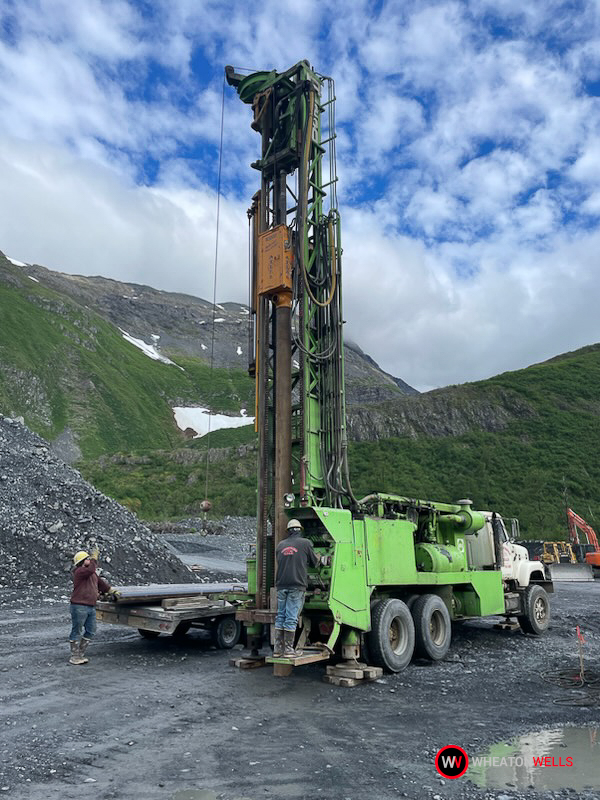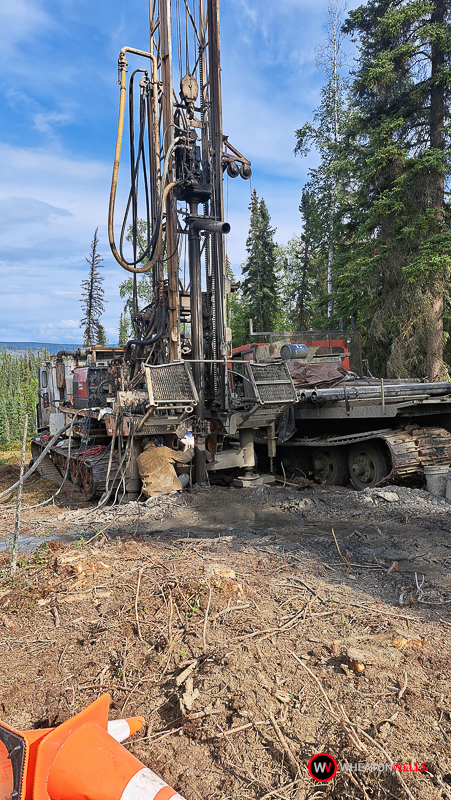The basics and challenges of remote drilling in Alaska
Wheaton Wells has made substantial investments in equipment and expertise to conduct exploratory drilling for a variety of applications across the state of Alaska. The company utilizes advanced drilling technologies like reverse circulation and air/mud rotary systems to bore exploratory wells for mineral exploration and water production in all regions of the state, from the North Slope to the southeast panhandle.
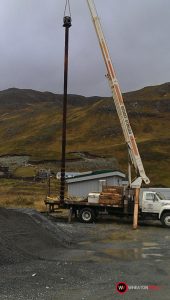
With its extensive inventory of rigs, tools and support equipment specially adapted for the challenging terrain and climate of Alaska, paired with experienced crews adept at operating in remote locations, Wheaton Wells has the capabilities and know-how to provide various sampling, water testing, and other exploratory drilling services that allow clients to evaluate subsurface resources and conditions.
The company’s skilled drilling teams can deploy quickly to sites accessible only by ice roads, helicopter or marshaling equipment overland, using ingenious rigs like drills mounted on skiis to traverse rough tundra in the snow.
Wheaton Wells’ unmatched experience conducting exploratory drilling from the frigid permafrost of the Arctic Circle to the temperate rainforests of the Alaska Peninsula has made the company an indispensable partner for mining companies, hydrologists, geologists and other entities seeking to uncover Alaska’s hidden subsurface resources.
Conventional Rotary Air/Mud Drilling
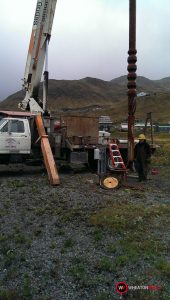
Conventional rotary drilling is the most economical and efficient way to reach deep beneath the earth’s surface in search of valuable minerals and resources. This technique utilizes a drill bit affixed to a rotating drill string that bores through layers of rock and soil. As the drill grinds deeper, it must continuously lift the Drill cuttings, so geologists can analyze them. Two primary methods accomplish this crucial task: air drilling and mud drilling.
In air drilling, compressed air is forced down the center of the drill pipe. This air then rushes back up the space between the drill pipe and the borehole walls, carrying the cuttings along with it. The air and rock particles blast out of the hole and collect in a cyclone device. From there, geologists gather samples to examine under microscopes and run various tests on. Though fast and straightforward, air drilling lacks the ability to stabilize walls and control pressure.
Mud drilling improves on air drilling by using specially formulated drilling muds. These thick, viscous fluids are pumped down hole, where they circulate bottom hole cuttings to the surface. The mud’s density also serves to stabilize the borehole, prevent blowouts, and lubricate the drill string.
Once at the surface, the mud flows across shaker screens that sieve out the rock fragments. The filtered mud is then recycled back down for reuse. Mud drilling allows for greater control and depth. Together, air and mud rotary drilling provide an optimal one-two punch to carve through the earth and efficiently deliver vital subsurface data.
Reverse Circulation (RC) Drilling
Reverse circulation (RC) drilling is a valuable but more expensive method for obtaining detailed knowledge of subsurface soil composition during exploration drilling. Widely used in mineral-rich countries like Australia and South America where understanding soil composition at depth is critical, RC drilling provides superior accuracy compared to conventional rotary drilling.
The key to RC drilling is the dual wall drill string. Compressed air is forced down the outer drill pipe and out through a side inlet swivel at the drill bit. This air then propels the cuttings up the inner drill pipe where they are collected at surface for analysis.
While more costly per foot than mud rotary techniques, RC drilling produces superior understanding of ore grades and distributions in the subsurface. For miners seeking to delineate reserves and maximize value, the improved accuracy and reduced sampling ambiguity of RC drilling delivers knowledge critical to efficient extraction and processing.
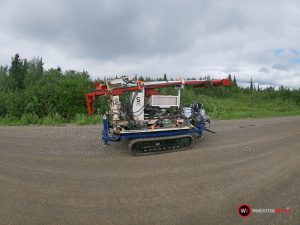
Its higher upfront price pays dividends down the road through optimized mine planning and design. For these reasons, in complex, high-value mineral deposits, RC is the go-to drilling technique.
DRILLING SERVICES
Air Rotary
Mud Rotary
Reverse Circulation
INDUSTRIES SERVED
Municipal
Industrial
Commercial
Agricultural
Domestic
Mining
MUNICIPAL WATER WELLS
We are experienced in working with engineers to construct a clean and safe water source. Wheaton Water Wells has the capability and experience to install up to 20 inch casing to maximize water yield and allowable pump size.
OUR STORIES
We have traversed through miles and miles of snow and ice road switchbacks and overflow at -30below. Hauling drilling materials into a remote village, normally only accessible by river or plane. Some of our vehicles had to be dragged through the ice roads by bulldozers and front loaders. We have helped construct snow bridges in order to facilitate the move of equipment in a village.
- Wheaton Wells understands building job site-specific equipment to meet a certain requirement in remote locations
- Our resilient team is committed to finding water
- We will tell you what you need to hear, not what you want to hear!
- We don’t quit, we will keep trying!
- We strive to under-commit and over-deliver!
- Our remote rigs can be configured for different Alaska terrain challenges!
